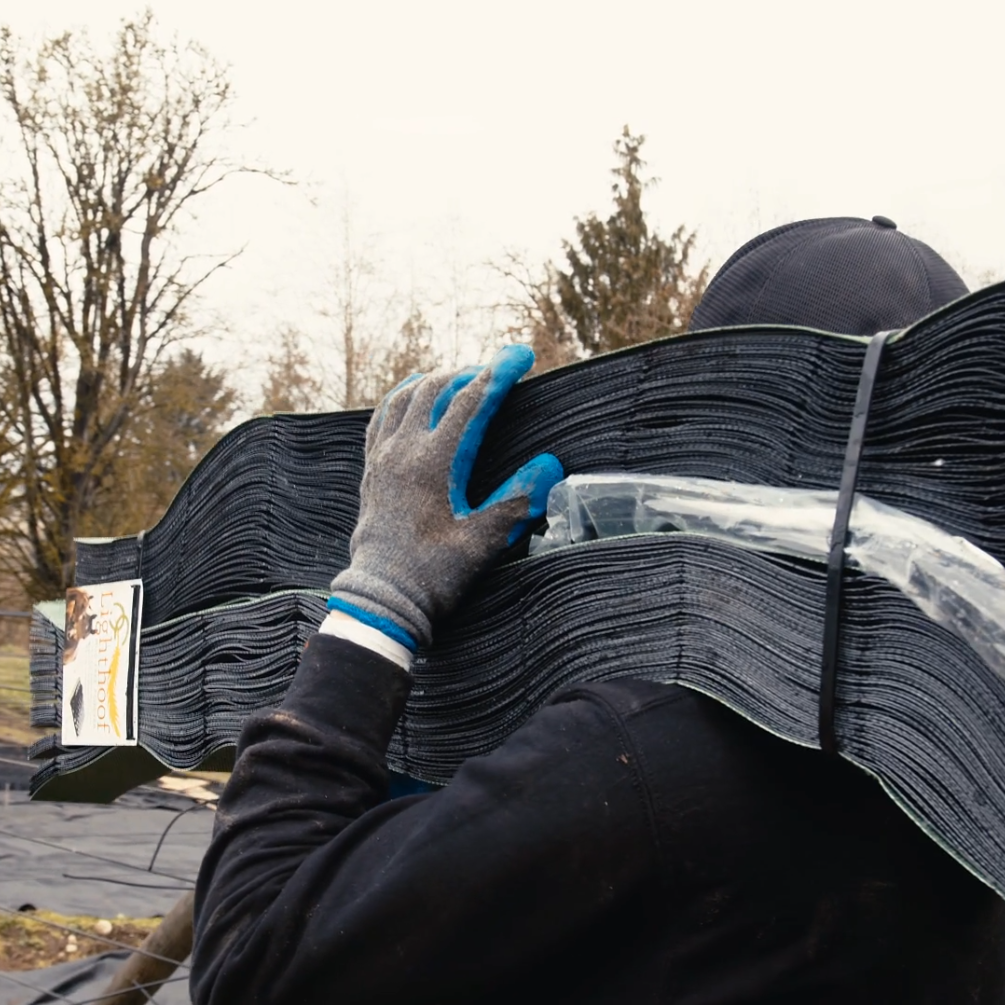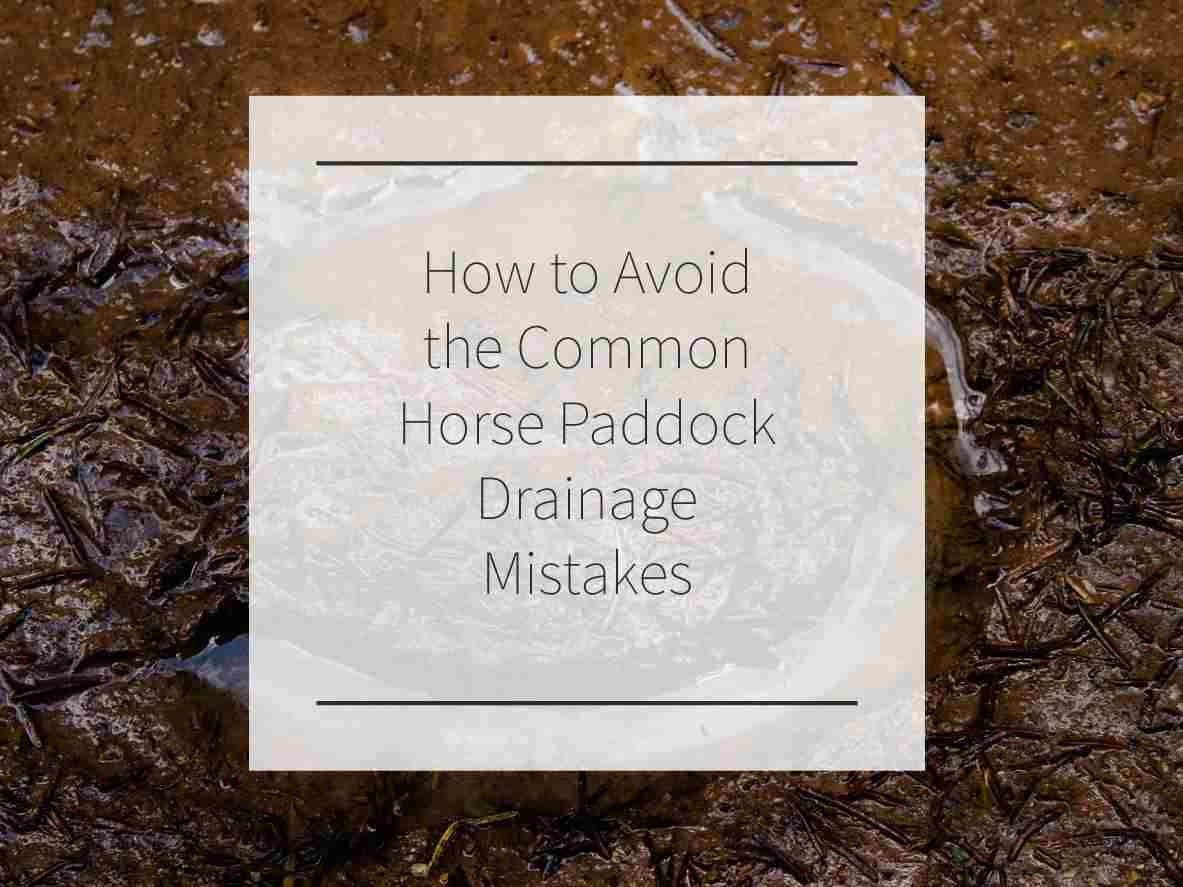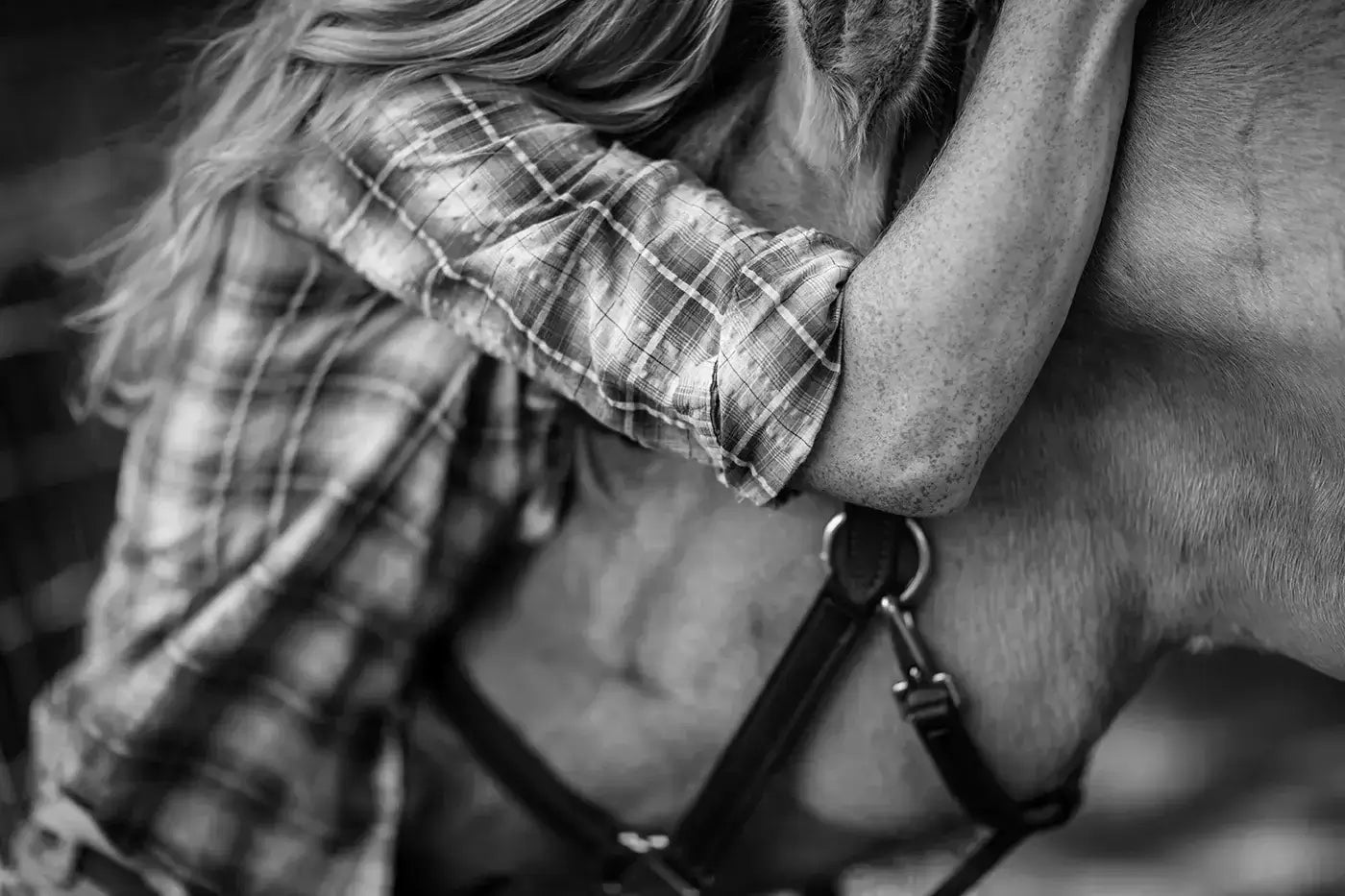
The last thing we want during our barn remodel is to have our progress waylaid by an accident to horses or humans that could put someone on your team out of commission and incur vet or medical bills that can consume your project budget - or worse!!
That’s why it’s a good idea to go into any project with a careful site review and keeping these safety considerations in mind. The best time to do safety planning is at the start of your project during your design and scheduling phase. For more info on project planning your barn remodel, see our Project Planning How To Video.
An early review of potential hazards during the job can prevent injury or damage to your property and an eye on future safety concerns can help you design a living space for your horses that will protect them and keep them from harm.
Let’s start with job hazards.
Although Lighthoof can be installed with the relatively safe wheelbarrow and shovel, you will most likely be wanting to use a small or medium tractor to move gravel. Anytime you are using equipment, you will want to have a qualified operator and you will want to keep a close eye on your terrain to prevent a potentially deadly rollover and also prevent damage to your buildings.
If the area you are installing Lighthoof is muddy and difficult to drive safely through, bear in mind that Lighthoof can be driven on as soon as the panels are filled, so you could start your installation with the first accessible point and then use the safe and stable ground created by that freshly installed section of Lighthoof to reach the other areas you are working on. You don’t have to lay out all the panels and then fill them, you can work your way in one or two panels at a time to create the accessibility you need for your equipment.
If you are doing any digging, either to set fence posts or adjust your grade and create drainage, you want to make darn sure there aren’t any electrical or water lines that you don’t know about.
 You can call 811 anywhere in the US to have your utilities marked for free anywhere between the street and your utility meter. However, this is usually only useful for “front yard” projects and your Lighthoof installation, or any work you are doing on your barn or paddocks, are not likely to be located between the street and the meter. This means you are dealing with private lines and, if you’re not the one who built your farm, there isn’t likely to be any documentation about where those are.
You can call 811 anywhere in the US to have your utilities marked for free anywhere between the street and your utility meter. However, this is usually only useful for “front yard” projects and your Lighthoof installation, or any work you are doing on your barn or paddocks, are not likely to be located between the street and the meter. This means you are dealing with private lines and, if you’re not the one who built your farm, there isn’t likely to be any documentation about where those are.
The good news is there are services that can find and mark private electrical, water, and communication/data lines using finding equipment. Often times they can even estimate the depth of the line to let you know how much topsoil you can remove if regrading an area that a line runs through.

These services usually cost a couple hundred dollars and can save you thousands and possibly your life! Try searching for “Private Utility Locating” to find a provider in your area and be sure to call 1-2 weeks prior to digging to schedule your marking.
Now let’s look at safety considerations for your horses during the remodel and beyond!
In a perfect world, we would have another place to keep our horses while we are

remodeling their home. But if you’ve experienced a kitchen or bathroom remodel, then you are familiar with the months of stepping over and around a construction site as you go about your daily life. That’s how it typically tries to play out with a barn remodel as well. However, your horses can’t be trusted to avoid tools, equipment, and partially down fences for any length of time.
If boarding your horses out during a remodel isn’t an option, you will most likely be doing some temporary construction in order to do your actual construction. T-posts and electric fencing can be very useful as it’s generally sturdy in the short or mid-term and it’s easy to remove cleanly.
Alternatively, you can schedule your job in a particular order to avoid hazards. For example, in our sample barn remodel, the dutch doors were rotten and unsafe and the paddocks off the stalls needed Lighthoofing. We scheduled out the whole project in advance to complete the replacing of the dutch doors first in order to safely contain the horses in the stalls while we were working on their paddocks.
Anytime you are completing a barn remodel, the one project you shouldn’t cut from the roster is a safety sweep. In the case of our barn remodel, a full day was dedicated to cleaning up sharp edges and exposed hazards on the outside of the building so that horses couldn’t access anything we didn’t want them to from their paddocks.
Also, consider things that aren’t currently a hazard, but could become a hazard with regular (or extra rough horseplay style) wear and tear. Gutter downspouts, for example, can turn into sharp edges if horses push or scratch on them and may need to be protected with a box built from 2x4s. Metal mesh fencing can sometimes be fine, but can sometimes break into pokey things if horses don’t have grass in their paddocks and are trying to push under or over the fence to get a nibble.
A properly constructed and safe electric fence, either as a standalone solution or as a reinforcer to keep horses from touching a wood or metal fence, can be a very good way to keep horses from compromising the safety of their enclosure. I happen to have a favorite, and it’s the Shockline coated electric wire from Ramm Fence. It’s a stiff wire that’s not likely to get wrapped around anything, features a smooth conductive plastic coating, and delivers a good “zingy” reminder not to touch!

Another way to build in more safety for your horses is to plan your design around your emergency response procedures.
Barn fires seem like they are getting more and more common and even those who work hard on prevention aren’t completely immune from the risk. The problem is that barns, and everything in them, are so inherently flammable that fires spread fast and an immediate and effective response is the only way to save lives.
I once attended a seminar put on by our local large animal hospital in conjunction with the fire department and a forensic fire investigator - a specialist who figures out how fires start and spread for insurance and code purposes. One of the things they emphasized is that the key to saving horses was to reduce the distance to exits and if possible to have multiple, easy to access, exits from the barn.

If your barn is able to have doors to the outside from the stalls, this can be a huge help during a fire emergency response. The horses can get out of their stalls, and the rescue crew can get to them without entering the building.
One major feature that I emphasize when remodeling stall runs, aside from mud management of course, is to use a fencing material and design that is easily openable from the outside so that all horses can be removed from their paddocks quickly without having to cross through the barn. Most firefighters have equipment to break down a fence if needed, but seconds count in a fire and you want your horses to be able to get out quickly and safely.
In the design for our example barn remodel, there isn’t access to the back side of every paddock, so we are designing the cross fencing between the paddocks to be easily removable so that the horses can cross through the paddocks to the front and escape. It’s also convenient if we need to access the outside of the barn again with equipment for maintenance.
A successful barn remodel should do the job of making the barn more beautiful, enhance its ability to serve us and our horses better in our daily lives, and above all maximize its benefits to shelter our horses and protect them from harm.
Follow along with our barn and paddock remodel to get inspiration and ideas on how to up your barn’s horsekeeping game with some choice improvements that make a big impact.





Leave a comment
This site is protected by hCaptcha and the hCaptcha Privacy Policy and Terms of Service apply.